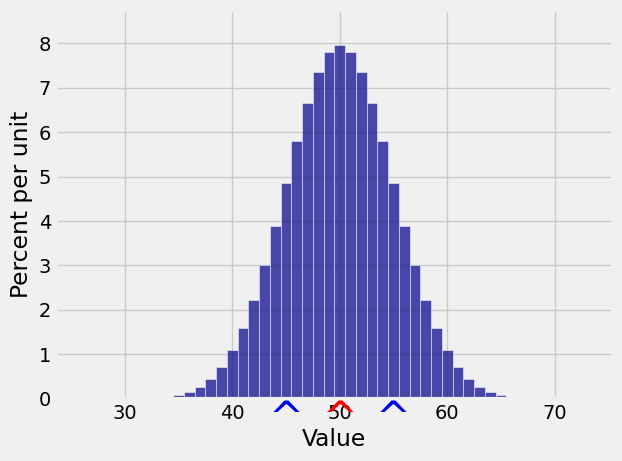13.3. Sums of Independent Variables#
After the dry, algebraic discussion of the previous section it is a relief to finally be able to compute some variances.
See More
13.3.1. The Variance of a Sum#
Let
The variance of the sum is
We say that the variance of the sum is the sum of all the variances and all the covariances.
The first sum has
The second sum has
Since
13.3.2. Sum of Independent Random Variables#
If
Therefore if
Thus for independent random variables
When the random variables are i.i.d., this simplifies even further.
See More
13.3.3. Sum of an IID Sample#
Let
Let
This implies that as the sample size
Quick Check
Suppose the sizes of
(a) Pick one of the following values for
(b) Pick one of the following values for
Answer
(a)
(b)
Here is an important application of the formula for the variance of an i.i.d. sample sum.
13.3.4. Variance of the Binomial#
Let
where
For example, if
Here is the distribution of
k = np.arange(25, 75, 1)
binom_probs = stats.binom.pmf(k, 100, 0.5)
binom_dist = Table().values(k).probabilities(binom_probs)
Plot(binom_dist, show_ev=True, show_sd=True)

Quick Check
A die is rolled
Answer
Expectation
See More
13.3.5. Variance of the Poisson, Revisited#
We showed earlier that if
One way in which a Poisson
Now let’s compare the standard deviations. The standard deviation of the binomial is
But

